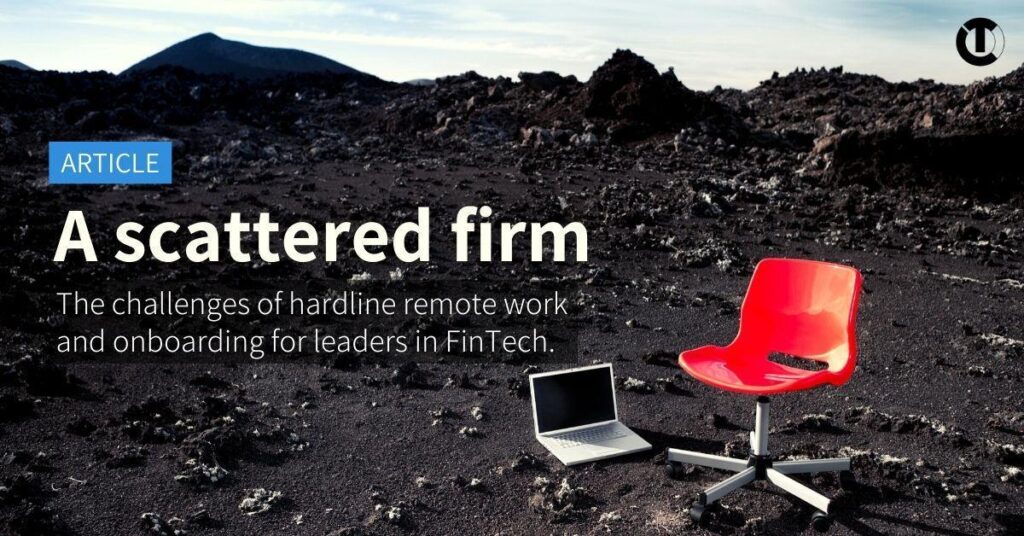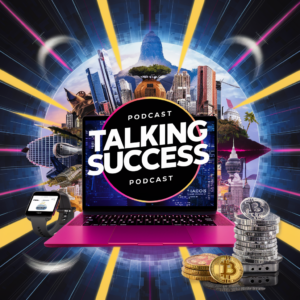A scattered firm
A considerable point of interest for us last year, along with the majority I imagine, was Remote Work and Onboarding. How had FinTechs who’d had to transition quickly and with very little preparation or experience manage to break down, uproot and scatter their operational hearth, and then begin to function efficiently and effectively as a remote business? Had they managed to? How was hardline remote work affecting those businesses that were already moving in that direction?
In a report we published in July last year, we touched on this when speaking to a few of the FinTech leaders interviewed (How FinTech Leaders Plan to Adapt to the ‘New Normal’), but it was a cursory topic at the time and the transition still fresh.
We wanted to find out what the challenges were. What was working and what wasn’t? Had they made any new hires? And if so, how did they onboard them effectively? How did they instil their culture and purpose? The intangibles that keep your team passionate and motivated, especially with the much-heightened emotional distress engendered by the pandemic.
Remote work
To get some insight into how Fintechs were coping with remote work, I reached out again to some of the FinTech leaders we interviewed, hoping to chip a little more time out of their busy day for my curiosity. Curiously, they obliged.
The feedback was expectedly varied, given the diversity in services, products and operational structures. A few had been remote-first from the beginning and others had been on their way there before the pandemic hit, and so the transition was relatively painless.
But there were still challenges:
The customer-facing department.
The lack of impact (non-virtual) communication has had a notable effect on performance.
Maintaining energy and pro-activity virtually.
The status quo of endless zoom calls creates fatigue and de-motivation.
BANDWIDTH & POWER!
Not everyone has a stable internet connection, and almost no-one has a generator.
For those who’d had to make rapid changes and adapt their work environment, there were some significant transitions and pain-points:
Shifting the employee’s mindset from hours at a desk to purely outcome-based work.
There is a certain mental crutch that comes with 9 to 5 in the office.
Managing team and individual motivation.
Employees who are not used to working from home are struggling with the blurred environment.
Clearly defined roles.
Employees need far more structure and channelling when working in an isolated environment.
Finding the right goal-setting and performance-tracking methods and tools.
It can be costly for both time and productivity to trial these tools when looking for the right structure.
A challenge that was echoed on many of the calls I had with fintech leaders was to do with the ‘people’ moments, as it were. The moments of in-the-room collaboration along with the sense of energy that can drive an idea and productivity weren’t there. The things that keep the fires lit for teams and the individuals, and stimulate innovation. This was highlighted as a key part of their business mission.
Onboarding remotely
When I spoke to the remote-already leaders and seamless transitioners about their onboarding efforts during the pandemic, there were a few struggles that stood out:
Onboarding juniors.
Even in a remote business, there’s almost always an initial period of being in-office and interacting personally with a direct manager and a few colleagues that’s important for a new joiner’s experience and contribution to the business.
Onboarding people you’ve never met.
ZERO face-to-face proved an unsettling factor when it came to building rapport.
For those for which the curve to remote-work was steep:
The induction process needed to be redone.
More detailed, more specific, and a lot more hand-holding. There was a lack of fluidity and organic learning.
Creating direction and a support structure.
New joiners need help navigating their way and finding their feet.
Another common and considerable point of adversity for almost all of the conversations I had about remote onboarding: business CULTURE. It’s more intangible and less measurable but uniformly expressed as one of the biggest issues they’ve faced. It’s incredibly difficult to instil values, character and ways of working in a purely virtual environment into the effective experience of a new employee. And these are the building blocks of a highly functional business with a happy, productive and steadfast team.
I think it’s worth considering that a lot of the negative and quite tangible effects of a dying or diluted company culture are latent and will manifest down the line.
Closing thoughts
It’s evident that hardline remote work is a tough problem to tackle, for every stakeholder. FinTech leaders are struggling to manage the monotony, isolation, operational requirements, support structures, lack of engagement and poor company culture that has come along with such a swift and unyielding transition. What to do?
Well, a starting point would be to take an audit of your Employer Brand, which should now be entirely digital. A strong employer brand is a key component to help manage current employees and new joiners remotely. The ubiquitous message and experience that your company imbues deserve an enormous amount of consideration. It breeds loyalty, confidence and a sense of purpose that means you get the best out of your team. They’re also more likely to stick around.
And if we jump ahead? The answer from all and sundry was not to go back to the office or to stick to remote work and iron out the issues, but a hybrid model where both the office and home office were an option. There are virtues in both, and likely a far more functional and productive work environment when paired together.
Titc.io is a leader in Global FinTech Recruitment – We connect companies and executives enabling businesses to achieve key business objectives. Book a Free 30-minute call







